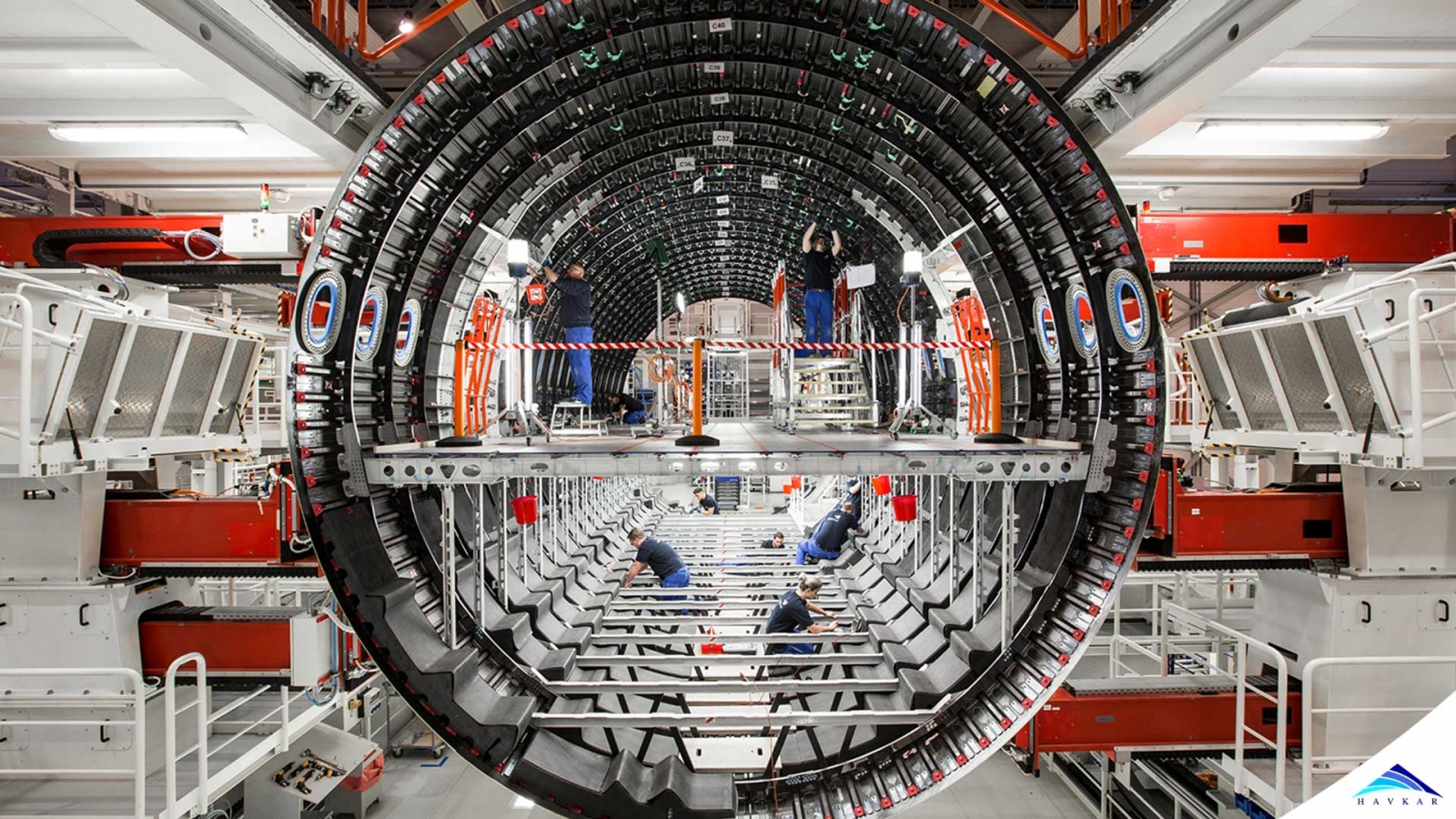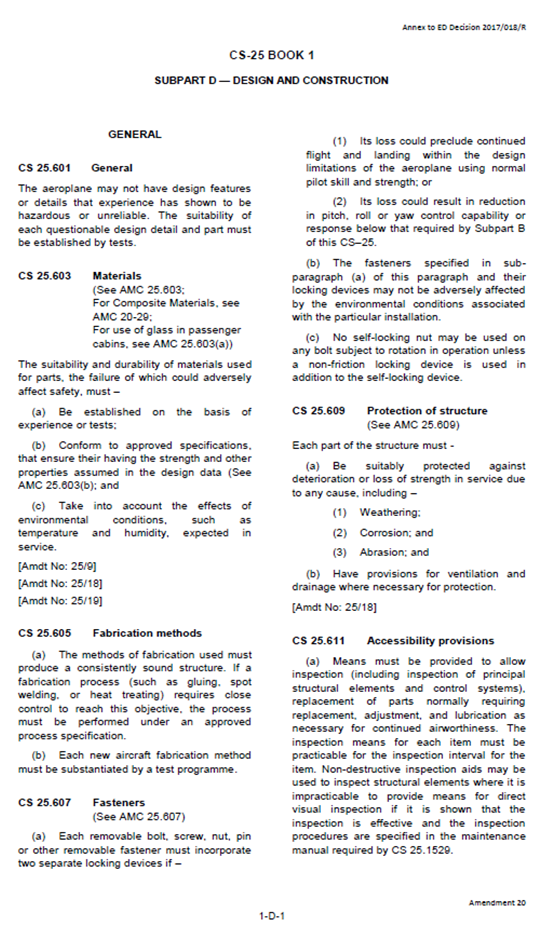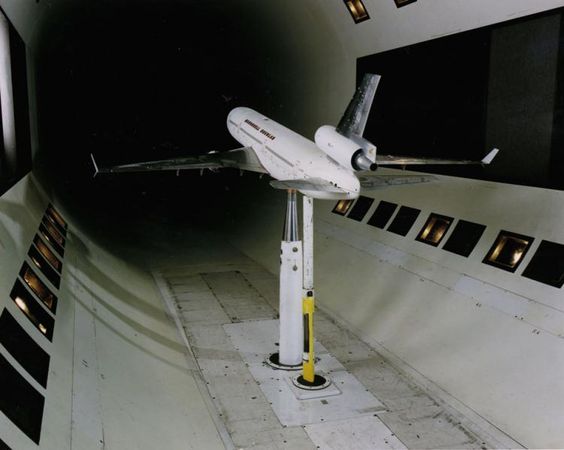
The safety is one of the leading factors when designing and manufacturing an aircraft. Before entering the service, the manufacturer has to provide the proof that the structure he has built do not break or damage during the service and the aircraft systems will work as planned.
In Europe, the aircrafts that fly the European aerospace have to be certified according to EASA "European Aviation Safety Agency". EASA is an organization that defines the regulations to be followed by the engineering offices and make suggestions for aircraft structure and systems design.
EASA has grouped all the rules to be followed by the large aircraft manufacturers and operators in chapters called CS (Certification Specifications). There are chapters that describe the certification requirements for different types of aircrafts, for engines, propellers, aircraft noise, engine emissions and fuel venting, aircraft operation for different weather condition, navigation, flight simulation training, and cabin and flight crew.

Chapter CS-25 contains the certification specifications for large aircraft manufacturing. It consists of two books. Book No.1, called Certification Specifications (CS), contains eight subparts and appendices, whose number may differ once a new issue is released. The subparts present the general requirements to be met by the aircraft. The appendices contain clear explanations and details to be sure that the specifications mentioned in each subpart are well understood. The explanations make use of sketches, graphs and define terms. Book No. 2 is called Acceptable Means of Compliance (AMC) and contains eleven subparts and describes acceptable means for showing compliance with the requirements presented in Book No.1.

Examples of specifications and acceptable means of compliance are shown below.


The required strength for the aircraft structure is proven by physical tests and elaborate analysis and simulations performed by engineers. Physical tests are done for individual parts, subassemblies and the whole aircraft on the ground and in flight. EASA certifies the structure built to withstand the maximum load that can ever occur on the aircraft, during the operation, without plastic deformation. It means that, under this load, the structure deflects elastically only, so it relaxes back to initial shape when the charging stops. This load is called limit load. Also the structure must withstand without breaking for the first 3 seconds under 1.5 x limit load. This is called ultimate load.
The loading on the aircraft to be designed are aerodynamic (lift, drag thrust and the moments caused by them) and inertia loading caused by the weight of the structure and equipment, the passengers, cargo and fuel.
The aerodynamic loading is obtained by performing airflow tests on scaled models in aerodynamic tunnel. The flow test is done for multiple aircraft configurations (horizontal flight, right turn, left turn, climbing, diving, etc). However, the airflow tests are expensive and can’t be done for all possible configurations that the airplane may face, therefore, in addition, an extensive analysis is performed by simulation on powerful computers. The final result is an envelope that describes any possible load that may occur during the flight. The number of simulated load cases is usually in the tens of thousands. When the aircraft is completed, flight test are performed. For these flights devices that can measure the air pressure and the strain of the main structure are installed. In this way the loading used to design the aircraft is checked and aligned if necessary.


As for the weight, it is multiplied by an acceleration factor, whose value is different on the three global axis of the aircraft and depends on the mission the aircraft is designed for. For instance, for the acceleration factor about the normal (to the wing) axis for an aircraft meant to carry passengers is 3.0 g (where g stands for gravitational acceleration).
The final result of the engineering design work is the drawings for each part to be manufactured and, further, assembled into the aircraft and a value that indicates how safe the component is.
This value is called margin of safety (MS) or reserve factor(RF):
MS = Fallowable/Fapplied – 1.
RS = Fallowable/Fapplied.
Both show how large the loading capacity is comparing to the maximum applied load. For instance, if the RF is 2.5 it means that the part can withstand 2.5 times the maximum load to ever be occurred by the airplane during its operation life (in this case the RF is called limit). The goal of the engineers is to design the structure with a reserve factor as close to one as possible. This is because when the reserve factor is high it means the structure is oversized and the weight of the material used is more than enough. It leads to a heavier airplane and therefore less performance (in terms of speed, fuel consumption, cargo weight and number of passengers).
There are aircrafts that are not affected by EASA regulations and remain the subject of national regulations. They are listed below:
The safety certificate for the aircrafts, flying the United States aerospace, is offered by another organization called FAA (Federal Aviation Administration). FAA is responsible for establishing aviation regulations in the US that are known as FARs (Federal Aviation Regulations).
It is interesting that the military aircrafts do not conform to any existing civilian type certificate. There are different organizations that define regulations for military aircrafts, like Military Aviation Authority (MAA) in United Kingdom and Air force (AF) in USA.
The aircraft structure and systems may be repaired and modified. However, they still have to meet the certification specifications. The repairs can be done during production or operation. For example, a component may present minor scratches due to improper handling to the manufacturer facility, or a bird my strike the wing leading edge and create a dent during the flight. Both damages are recorded and repaired following precise procedures. Aircraft modifications can be minor or major and they have to follow specifications presented in different chapters.
The certified aircrafts are checked and maintained periodically when in service, and this activity is also regulated. The aircraft is certified for a limited amount of flying hours. This period depends on the aircraft type and manufacturer. It can be in the range of 100 000 hours for a large civil airplane. This limitation is mainly due to the fatigue phenomenon which may lead to cracks and structure failure. When this period ends the aircraft can be recertified based on additional testing.
Please note that the certification specifications and acceptable means of compliance presented in this article are for informational purposes only. When needed to issue the aircraft certificate please refers to the official documentation of the agency that operates on your territory.